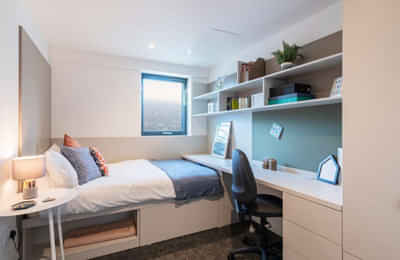Clapham, a bustling district in South London, is renowned for its vibrant atmosphere, excellent transport links, and proximity to several universities. This makes it a popular choice for students seeking accommodation. According to property experts like Clapham estate agents, over the years, the student accommodation market in Clapham has evolved, reflecting broader trends in the property sector and changes in student preferences. Here’s an in-depth look at the current state of the student accommodation market in Clapham.
1. Demand and Supply Dynamics
The demand for student accommodation in Clapham remains robust. With its close proximity to universities such as King’s College London, London South Bank University, and University College London, Clapham attracts a significant number of students each year. The area’s appeal is further boosted by its vibrant social scene, parks, and diverse amenities.
However, the supply of student accommodation has struggled to keep pace with this demand. Many traditional student houses and flats are being converted into high-end residential properties, reducing the availability of affordable options. This has led to increased competition for the existing student properties, pushing up rental prices.
2. Types of Accommodation Available
Clapham offers a variety of accommodation types for students, each with its own set of advantages and challenges:
- Private Rented Houses and Flats: Many students opt for private rentals, sharing houses or flats with friends. This option provides more freedom and can be more cost-effective when rent is split among multiple tenants. However, the rising demand and limited supply have driven up rental prices.
- Purpose-Built Student Accommodation (PBSA): There has been a growing trend towards purpose-built student accommodation in Clapham. These developments offer modern amenities such as gyms, study areas, and social spaces, appealing to students looking for a more community-focused living experience. However, these can be more expensive compared to traditional rentals.
- University-Managed Halls: While not as prevalent in Clapham as in other areas, some universities offer halls of residence. These are typically located further from the main attractions of Clapham but provide a secure and often more affordable option for first-year students.
3. Rental Prices and Affordability
Rental prices in Clapham have seen a steady increase, reflecting the high demand and limited supply. On average, students can expect to pay between £600 and £800 per month for a room in a shared house or flat. Purpose-built student accommodation tends to be more expensive, with prices ranging from £900 to £1,500 per month, depending on the level of amenities and the location.
Affordability remains a key concern for students. The rise in rental prices means that many students are spending a significant portion of their budgets on accommodation, which can impact their overall university experience. Some students are opting to live further out and commute in to take advantage of lower rents.
4. Impact of the COVID-19 Pandemic
The COVID-19 pandemic has had a significant impact on the student accommodation market in Clapham, as it has globally. During the height of the pandemic, many students moved back home or deferred their studies, leading to a temporary drop in demand. However, as universities have returned to in-person teaching, demand has rebounded strongly.
One lasting impact of the pandemic is the increased expectation for high-quality accommodation with good internet connectivity and private study spaces, as remote learning and hybrid models become more common. This has put pressure on landlords and developers to upgrade their properties to meet these new standards.
5. Future Trends and Development
In the long term, some of the trends likely to shape student accommodation in Clapham include:
- Sustainability begins as a way of living, with more students aiming to have environmentally friendly accommodation. Thus, demands for energy-efficient buildings, facilities relating to recycling, or even access to public transport could occur.
- Technological integration: With smart home technology being more in demand, so have the necessities of students’ desires—high-speed internet, smart locks, efficient heating systems, etc. The more investment a landlord or developer places into these types of technologies, the more likely they will incur more tenants.
- The pandemic serves as a prime reminder of community and well-being. Purpose-built student accommodation with communal spaces, wellbeing programs, and support services will retain their appeal.
6. Challenges and Opportunities
- While there are various problems, including continuously rising rental values and a lack of supply that levels out the student accommodation market in Clapham, there are opportunities for innovation and improvement:
- Affordable Housing Initiatives: Affordable student accommodation is lacking. Incentivising initiatives to develop affordable student accommodation would go a long way in solving the problem.
- University collaboration: This involves forming partnerships between the universities and private developers in providing high-quality and affordable accommodation to students.
- Stronger landlord regulation and increased accreditation could ensure that good student living standards are maintained, making students better protected from lower living standards.
Conclusion
The student accommodation market in Clapham is changing, desirous, and highly competitive – specifically for this rapidly growing portion of rentals. In reality, though, difficulties have to be faced; there are tremendous opportunities for betterment and innovation. Clapham can keep being one of the places that attract students seeking a lively university experience and comprehensive backgrounds that give meaning to their potential if it keeps considerations on affordability, sustainability, and technological integration.











